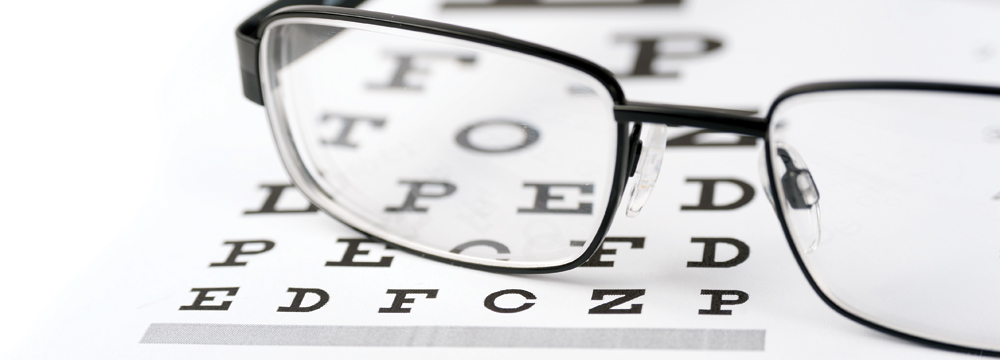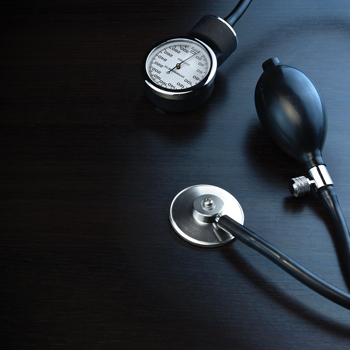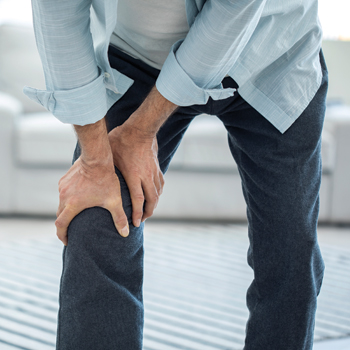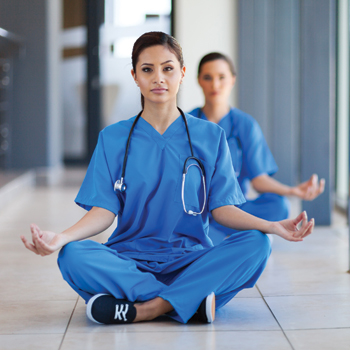
Action, advocacy, partnering for falls
Partnering with patients can make a big difference in preventing falls, which can result in lingering disability.
Primary care doctors who advocate for more physical activity in their older patients, along with a few other measures, can significantly reduce their risk of a serious and potentially long-term debilitating fall, according to a recent meta-analysis of 54 randomized studies.
Adults ages 65 years and older who exercised and had their vision assessed, and corrected if needed, were 38% less likely to experience an injury-causing fall, according to the meta-analysis, which was published Nov. 7, 2017, in JAMA. Exercise alone reduced the likelihood by 12%, according to the findings.
Nearly 3 million older adults annually are treated in the ED for fall-related injuries, according to the CDC. Once an older individual has a serious fall, the likelihood of lingering disability is high, according to a study published Oct. 28, 2013, in JAMA Internal Medicine. The prospective analysis, which followed 754 adults ages 70 years and older, determined that of the 130 individuals who were injured from a fall, nearly two-thirds experienced little to no recovery. Only those individuals who had limited or no disability before the fall were able to bounce back.
The JAMA meta-analysis is notable not just for its breadth and analytical rigor but because its findings provide specific steps to assist vulnerable patients, said Eric Larson, MD, MPH, MACP, who authored an editorial on the study published in the same issue.
“Most studies say we need more research—this study doesn't say that,” said Dr. Larson, vice president for research and health care innovation at Kaiser Foundation Health Plan of Washington in Seattle. “What we need is more action. And you can partner with your patients to really make a big difference.”
The challenge for doctors is how to carve out time in a packed schedule to put such research findings into practice, said Neil Binkley, MD, a geriatrician and professor in the department of medicine-geriatrics at the University of Wisconsin-Madison. But a quick assessment and intervention can be completed in as few as five minutes, said Dr. Binkley, who presented the approach at a North American Menopause Society meeting last year. Above all, he said, osteoporosis experts and other physicians should better spell out to patients the risk that they are running if they don't protect themselves.
“Emphasize [to the patient] that ‘The reason that I'm asking you to go to physical therapy, or the reason that I'm asking you to take vitamin D, or the reason that I'm asking you to take a bone medication, is that I'd like you to maintain your independence by not falling and not breaking,’” Dr. Binkley said. “I don't think that's a message that our field has done a good job of sending.”
Snapshot of vulnerability
In 2014, nearly 29% of adults ages 65 years and older reported at least one fall during the prior year, according to an analysis of federal survey data published in 2016 in Morbidity and Mortality Weekly Report. Of those 29 million falls reported, 7 million required medical treatment or forced patients to restrict their activity for at least a day. Based on current fall trends and an aging population, that number of injury-causing falls could reach nearly 12 million by 2030, the researchers projected.
Frequently, there's no single cause of a given fall but rather a panoply of contributing factors, anything from gait or balance difficulties to visual impairments to medication side effects to postural hypotension, said Thomas Gill, MD, FACP, a professor of medicine, epidemiology, and investigative medicine at Yale University in New Haven, Conn. Dr. Gill is one of the principal investigators for an ongoing large-scale prevention study, dubbed STRIDE (Strategies to Reduce Injuries and Develop Confidence in Elders), which has enrolled slightly more than 5,400 adults ages 70 years and older. Researchers are tracking whether risk reduction measures, implemented by a registered nurse trained as a falls care manager, reduce serious falls.
The age at which a patient becomes more likely to fall depends on several factors, such as other medical conditions and overall fitness, said Dr. Larson, who also co-authored the book “Enlightened Aging: Building Resilience for a Long, Active Life.” Still, anyone in their late 70s or older is considered at fall risk based on age alone, he said.
But the sorts of screening questions used in STRIDE could also be asked in a physician's office, Dr. Gill said. Among them are “Have you fallen two or more times in the past year? Have you fallen and been injured in the past year? Are you afraid of falling?”
To make the most efficient use of a physician's time, a medical assistant could handle this screening while checking the patient's weight and blood pressure and alert the physician to any worrisome result, Dr. Gill said. “You might consider it geriatric vital signs,” he said.
Sometimes how the question is framed can make a difference, said Dr. Binkley, who prefers a more open-ended approach. He doesn't ask his patients if they have fallen down. Otherwise, he said, they might be tempted to deny falling, worried that the doctor might think something is seriously wrong with them. Instead he asks, “When was the last time you fell down?”
To start figuring how to protect against another fall, Dr. Binkley delves further into the circumstances. What time of day did the fall occur? Were there any related symptoms such as dizziness or heart palpitations? Or did the patient trip over the cat in the middle of the night, with no night light nearby, which conveys some sense of the patient's home environment?
How the patient moves and stands during the course of an office visit also can yield some useful insight, according to several physicians. The medical assistant can play a role here, observing how long it takes for the patient to get from the waiting room through the various hallways to the exam room, Dr. Gill said.
Dr. Binkley often relies on a quick test to assess muscle strength: He asks patients to stand up from a straight-backed chair without using their arms. One red flag of muscle weakness, he said, is when patients rock forward and use their arms, placing a hand on each one of their knees to push themselves into a standing position.
“In my clinic, if you cannot stand up from the exam room chair without the use of your arms, that's the diagnosis of sarcopenia,” said Dr. Binkley, who is quick to make a physical therapy referral if he notices any strength, balance, or other mobility struggles.
Intervening earlier
The recent JAMA meta-analysis, involving the 54 randomized studies, looked at 39 potential interventions to determine which were more effective than usual care in preventing falls. (The mean age of the participants was 78 years.) Making safety-related changes to the individual's home environment, along with exercise and vision correction, together reduced fall risk by 23%.
The types of exercise involved varied from study to study, said Andrea Tricco, MSc, PhD, first author on the JAMA paper, a scientist at St. Michael's Hospital, and associate professor in the Dalla Lana School of Public Health at the University of Toronto. The meta-analysis lumped together the various exercise types—anything from tai chi to walking to strengthening with weights, she said. But Dr. Tricco said another analysis she's involved with, using the same research data as the meta-analysis, will look at which of 25 different types of exercise are more protective against falls.
Ideally, patients should select a type of exercise in addition to walking that includes some balance and strengthening components, such as Pilates or yoga, Dr. Larson said. Keeping the muscles that support the ankles strong and flexible also is helpful. The goal, he said, is for older adults to be able to adjust on the fly if, for instance, their shoe catches on an unexpected rise in the sidewalk, he said. “That really makes a huge difference if you have that ability to correct.”
But the best physical activity is the one that people will persist in doing, Dr. Larson said. Perhaps an exercise-resistant patient might be willing to set up a sedentary bike in front of the television or could be convinced to regularly walk around the nearby shopping mall with friends, he said. Even yard work can be beneficial—anything that gets someone off the couch.
Dr. Larson was particularly intrigued by the role that vision correction played in the JAMA meta-analysis. “It didn't surprise me once I saw it,” he said. “But I was not aware of just how potent evaluating a person's vision and correcting it if possible can be.”
As part of his five-minute clinical fall assessment—the development of which he credits to a University of Wisconsin colleague—Dr. Binkley tells his older patients who aren't already wearing bifocals to stock up on reading glasses at the dollar store. He also might suggest vitamin D supplements and tries to get a sense of their alcohol consumption. Along those lines, he'll ask patients to tell him how much they are drinking, with the assumption that patients frequently underreport.
A patient's alcohol habits not only can boost the likelihood of falling; that cocktail hour might interact with medications, Dr. Binkley said. Too often, patients are taking too many medications, prescribed by a mix of physician specialists, he said. Also, certain classes, including antidepressants, antihistamines, and antipsychotics, can boost vulnerability to falls, he added.
When doctors prescribe a new medication in an older patient, they should consider the recommended timing, Dr. Binkley said. Advising someone to swallow a diuretic pill before bedtime, he noted, will result in a bathroom visit in the wee hours, with the patient “getting up and wandering around a house that may or may not have night lights.”
Looking forward
Moving forward, the hope is that data coming out of STRIDE will help convince Medicare and other payers to cover more interventions, such as a falls-trained nurse, to better help patients without overloading physicians, Dr. Gill said. “The challenge is that health systems aren't necessarily set up to effectively screen or evaluate older persons for fall risk,” he said. “Largely because it takes time and it takes some investments up front.”
The STRIDE study, which stopped enrolling participants in early 2017, will follow them for an average of 2.4 years. Dr. Gill also cited another ongoing large-scale study, conducted with British adults ages 70 years and older, that could be influential in making such interventions more routine.
The study, which was described in a 2016 issue of BMJ Open, will compare fracture rates among more than 9,000 adults randomized to one of three groups: fall prevention advice only, advice with exercise (targeting lower-limb balance and strengthening), and a multipronged approach that looks at vision, medications, postural hypotension, and other factors. The rate of fracture over the subsequent 18 months is being tracked in these individuals, and the resulting findings should provide yet another piece of the fall prevention puzzle.
In the meantime, the JAMA meta-analysis illustrates that there's already “a fair amount of evidence” of steps that doctors can stress with patients, Dr. Gill said.
With the exception of some highly educated individuals, Dr. Gill said, “there's still a misunderstanding in the lay public that falls just represent the consequences of getting old, and perhaps not as much appreciation for the preventable nature of falls and injuries.”





